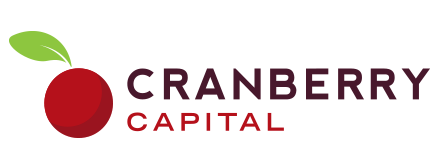
How Transparent Solar Panels Affect Construction Companies
How Transparent Solar Panels Affect Construction Companies
Four sustainable energy companies are poised to change the construction industry with transparent solar panel technology.
Research from Nielsen confirms that sustainability is a major concern among consumers of all ages. A global 2015 study found that, of all age groups, millennials are “the most willing to pay extra for sustainable offerings,” but 51 percent of baby boomers surveyed also said they would pay extra for sustainable products, and sustainability ranked very high in importance among Generation Z (people aged 15 to 20) as well. One can surmise from this, and studies like it, that many people are willing to pay a higher price not only for a sustainable product but for a product from a company whose public image is one of sustainability and environmental conscientiousness.
Solar power is a major player in the green design world, in part because it can be incorporated into nearly any structure (unlike, say, wind turbines) and is relatively affordable. Thanks to the federal solar tax credit, individuals and businesses that invest in solar energy systems can deduct up to 30 percent of the cost, without any cap on the total value of the installation. This is a boon for businesses wanting affordable alternative energy that saves money and the cachet of a sustainable company.
Despite the growing demand for aesthetically noninvasive solar panels, the leap to affordable and widely available transparent solar glass hasn’t happened yet. That said, it is almost certainly on the way, and when it is finally viable, it will become a dominant force in the construction and sustainable design world.
Transparent solar window technology
Scientists and researchers are working on transparent solar window technology, and a few promising products are being developed and sold in small quantities, but solar windows have yet to hit mainstream construction.
The main problem with transparent solar technology is maintaining transparency without losing efficiency. Solar cells used in solar paneling are opaque, which allows them to capture light that is visible to the human eye and convert it into energy at an efficiency rate of about 12 to 20 percent. Naturally, most people don’t want to inhabit buildings filled with opaque windows, so solar panels are typically placed on land or on roofs.
The quest for transparent solar cells began nearly 10 years ago, and since then, researchers at MIT, UCLA, Michigan State University and several other institutions have all succeeded to some extent. It is now possible to make a transparent solar cell that collects energy in the form of infrared and ultraviolet light, which human beings can’t see. Since these new solar cells only absorb light that’s invisible to us, the window appears transparent. While this is a huge step toward having solar windows on every new construction project, the technology isn’t viable yet. Unfortunately, transparent solar windows only have an efficiency rate of about 1 to 3 percent.
Until solar windows are as efficient as standard solar panels, they have little chance of proliferating in the market, but progress is being made every year, and it’s only a matter of time before solar windows explode onto the design and construction scene.
Solar window innovators
There are several exciting tech startups hoping to become dominant in the solar window space. Some of these innovators are still in preproduction or presale and hoping to nail down a fully transparent solar glass solution, while others are offering workaround solar window products that skirt the transparency issue through clever design.
Brite Solar
With the goal of changing greenhouse agriculture, Brite Solar developed Solar Glass, which alternates transparent glass and partially transparent panels. By balancing efficient traditional (partially opaque) solar cell technology with transparent glass, a blind effect is achieved, and while it may not be pretty enough for homes or hotels, its adoption by the agriculture industry may not be that far-fetched. Brite Solar also sells Dynamic Glass, which can be set to transparent or tinted at will, and Smart Glass, which is aimed at improving insulation.
Onyx Solar
Named a 2015 Glass Magazine Award winner for Most Innovative Glass and a 2015 Game-Changer by The Architect’s Newspaper, Onyx Solar currently offers fully customizable solar glass in stunning designs. Clients work with Onyx Solar to choose specific colors, shapes and transparency percentages. Rather than trying to force solar technology to disappear, Onyx Solar uses carefully cut and colored solar glass to create stunning architectural designs that are ultramodern and eye-catching. While Onyx Solar primarily works with large corporations, it could be a precursor of a more affordable, out-of-the-box version that appeals to individuals and small businesses.
Physee
A Netherlands-based tech company, Physee was named a Technology Pioneer by the World Economic Forum in 2017. The company’s flagship product is the PowerWindow, which sidesteps the difficulty of creating transparent solar cells by simply placing nontransparent solar paneling around the perimeter of the window. The PowerWindow allows users to charge devices directly from a USB on the window, and the system can be accessed with an app, which reports on the performance of each window and constantly monitors outside weather conditions and adapts accordingly.
Ubiquitous Energy
Founded by MIT grads, Ubiquitous Energy’s ClearView Power represents one of the earliest and most promising approaches to clear solar technology. The solar coating, which could theoretically be applied to any surface without compromising the aesthetic, is not being mass-produced yet, but real steps are being taken to bring the technology to market. Thus far, Ubiquitous Energy has succeeded at achieving 90 percent transparency with 10 percent efficiency, all in a film less than one-thousandth of a millimeter thick.

